

The Cal 25 & History
The Cal 25 is one of the most popular and successful Cals ever built. Over 2,000 hulls were constructed, and although they were designed over 40 years ago, they remain one of the more popular one-design racing yachts throughout the U.S. with fleets in Detroit, MI; Annapolis, MD; New Orleans, LA; Long Beach, CA and more.
The boat was designed by Bill Lapworth and made by Jensen Marine in Costa Mesa, CA.
They are also one of the first boats to be designed as Racer/Cruisers which have both a cruising interior, but are set up for racing. They are also quite affordable, and relatively inexpensive to maintain. A well equipped Cal25 can be had for around $4000. Problem areas include the plywood cored deck, and transom. But the hull is solid glass and rarely has any problems.
The Everyman Boat: The Cal 25 – SpinSheet
- Cal25 Specs
- C. William Lapworth
- Jensen Marine
- Calgan Marine
- Bangor Punta
- Owner's Manual & Brochure
- National Historical
- Chesapeake Historical
- Detroit Historical
- Long Beach Historical
- Why choose a Cal 25
C. William Lapworth 1919-2006
Excerpts from an interview conducted in 2004:
William “Bill” Lapworth was perhaps the foremost West Coast Naval Architect in the post World War II period. Born in Detroit, Michigan, he attended and graduated from the University of Michigan with a degree in marine engineering and naval architecture. After serving in the navy during World War II, Lapworth settled on the west coast and became partners with Merle Davis who had a yacht design office in Los Angeles. Davis died less than a year later.
At first, Lapworth paid the bills by doing surveying work.
Soon he was designing a series of light displacement racing sailboats that began to win or place highly on the East and West Coasts, beginning with Flying Scotsman and Nalu II, 46′ — a four time Class C Transpac race winner and first overall in 1959. Next came the 50′ sloop Ichiban, second overall in the 1961 Transpac. By 1958, more than 70 of the wooden L-36′ sloops had been built; but, by then fiberglass was becoming the material of choice.
All this attracted the attention of boat builder Jack Jensen who, one day walked in to Lapworths office and, with a handshake, was to form one of the most successful relationships in yachting history.
The first boat boat for Jensen was a 24 footer which Jensen proposed to be called the Lapworth 24. But Lapworth felt that since he had previously designed a 24 footer for someone else, a new name was called for.
According to Lapworth, this is when they decided on the name ‘Cal’ boats.
Together, Lapworth and Jensen produced thousands of boats including the Cal 20 (the most successful with more than 1,900 boats produced from 1961 to 1972), 24, 28, 29, 30, 33, 34, 36, 39, 40, and 46. The Lapworth/Jensen association continued until the Jensen’s death in 1980.
In is later years Lapworth kept his own Cal 46 which he said was the favorite of all his designs.
Jensen Marine/Cal Boats
Founded by Jack Jensen and originally located at Costa Mesa, CA. The company first sold the centerboard LAPWORTH 24 designed by Bill Lapworth. The Lapworth’s 24 sold well. The name was first changed to CALIFORNIA 24 and then CAL 24. The name Cal stuck with the company until it closed in 1986.
The 24 was a success and Jensen hired Lapworth to design several more yachts including a 27 foot pop-top racer/cruiser. (there would ultimately be 3 Cal 27’s)
The CAL 40 was introduced in 1963. These yachts became one of the most celebrated production racings yachts of all time.
Bangor Punta purchased Jensen Marine in 1965*.
Boats were still listed as being built by Jensen Marine for a number of years after this date. Jensen Marine also built RV/Motor homes for few years at the Costa Mesa plant.
The Cal Yacht factory was moved to Tampa, Florida in January of 1981. The factory remained in Tampa until March of 1985. It was then moved to Fall River, Massachusetts and was managed by Jim Hunt, son of yacht designer C. Raymond Hunt. Bangor Punta also owned O’Day Yachts and Prindle Catamarans.
Later there was Siegler Marine, Starcraft Sailboat Products, and then finally just Cal Boats. If all the later takeovers are included, Cal boats continued to be built until 1989.
(Eds. note: An attempt was made to list the boats as they were named by the manufacturer. For example, the second version of the CAL 30 was called the CAL 2-30. In cases where a later model used the same name as an ealier one, the boat is listed here with a unique identifier in parenthisis, such as CAL 24 (HUNT)to designate it as a separate model.)
Calgan Marine Ltd. (CAN)
Founded by Al Nairne. Based in Vancouver, BC. During a visit to California, Nairne saw a CAL 20, and was so impressed that he made arrangements with Jack Jensen of Jensen Marine to build Cal boats in Canada. Calgan built some 300 Cals (20′ 25′ 28′ 29′), and developed its own line of Crown/Calgan sailboats, at its plant on Crown Street in North Vancouver, BC.
Bangor Punta Corp.
Bangor Punta Corporation (traded on the NYSE under BNK) was an American conglomerate and Fortune 500 Company founded in 1964. It bought out O’Day Corp. and Jensen Marine as well as a number of other well-known companies primarily in the pleasure craft, firearms and general aviation industries. It was acquired by Lear Siegler, Inc. in 1984.
Owner’s Guide Original Cal25 Brochure 1987 Nat Constitution SeaBreeze Newsletter Chesapeake Fleet History Fleet Captain’s Commentary 1989 Detroit News Letter Cal Clews Detroit Boat Show Late 60s Long Beach report on 1980 Nationals Schreiber Detroit Fleet History Long Beach Newletter – W. Wright
The Cal 25 National Class Association
By Peggy Walsh-Sarnecki reprinted here with Permission of The Detroit Free Press Love to own a sailboat but leery of those boat-show price tags? Stop worrying. There are used boats out there that are every bit as much fun as a new boat, and that leave you enough cash to pay for the slip. One good candidate is the Cal 25, said Peter Wenzler, Bayview Yacht Club’s race chairman.Wenzler has a Cal 25 named O. Henry, and he’s sold on this class of boats for beginners and advanced sailors alike.
“It’s very affordable,” Wenzler said. “You can get into them for about $2,000 (see the Classifieds ) at the low end and about $5,000 at the top.” Beginners will like its stability. The boat doesn’t carry an excessive amount of sail. This means it’s not likely to blow over in an unexpected breeze. It has a roomy cockpit with bench seating for six, and it sleeps four.
Experienced sailors will like the one-design racing in a competitive fleet. Don’t be put off by the PHRF rating of 222. It doesn’t matter what the numbers are when you’re on the starting line jockeying for position — you’ll have your share of thrills.
They just won’t die Cal 25s were built from 1965 to 1972, but the class just won’t die. Bill and Sally Martin of Ann Arbor are two of the most experienced sailors in the area. Their Santa Cruz 70, Stripes, is a consistent Port Huron to Mackinac contender in the big boat class. They started sailing in a Cal 25 called Getaway. They had the boat for six years and then did what most big boat sailors do: progressively moved up in size until they landed in their 70-footer.
Recently their son found an old Cal 25, and the Martins are back to racing with the Cal 25 fleet in the National Offshore One-Design Regatta, commonly called the NOODS, and the annual end-of-season race from Bayview Yacht Club to the North Channel.
Their new Cal 25’s name is reminiscent of the days when the Martins named three of their boats, including the current one, Stars and Stripes. Then Dennis Conner stole the name for his America’s Cup boat and the Martins re-christened theirSanta Cruz 70 Stripes. The new Cal 25? It’s named Stars &.
“It was in the boneyard. The best thing that could have happened to it was a mercy killing,” Martin joked about his new boat. He restored the boat a little more meticulously than the average Cal 25 owner. He won’t say how much he’s spent on it — he says he doesn’t even know.
‘The best deal going’ But talking to Martin, it’s clear it’s a labor of love. “It is the best deal going,” Martin said. “I think in particular in the Detroit area for a boat, because it can do everything you want it to do. If you want to go out with your family and day-sail, it’s easy to sail. If you want to take your family and go overnight, you can do it. And if you want to race it, it’s got an incredibly great one-design class.” “And …they are dirt cheap,” Martin said.
Wenzler said many of the older boats need to have the decking plywood replaced and a support beam placed under the mast. Some of the boats on the market have had this repair.
But if it hasn’t been done, it’s a job the owners can do by themselves, Wenzler said. He even offered to tell Cal 25 owners how to do it, if they just stop in and see him at work. He’s manager of Thomas Hardware in Grosse Pointe Farms, where many local sailors go for their nautical needs. “In the last three or four years, we’ve had a real resurgence of the class,” Wenzler said. “With a little elbow grease, it doesn’t take much to get them competitive.”
Peggy Walsh-Sarnecki can be reached at by E-mail at pwalsh@freepress.com
Back to Top
- Cal-25 #1 Restored
- DRYA Regatta Updates
- Latest news
- Technical & Go Fast Tips
- Website Improvements
- Where have you sailed your Cal 25?
Recent Posts
- 8 Bells for a Cal-25 legend
- Never Alone Three-peats Bayview One Design
- 2022 Cal-25 National Championship
- Never Alone wins again – 2022 Bayview One Design
Recent Comments
- William Fitzroy on Restoration Cal-25 #1 – One More Time (Part 3 of 3)
- Patrick Dore on Cal 25 Std Standing & Running Rigging and Spinnaker & Reefing Specification
- Scott Peterson on Restoration Cal-25 #1 – One More Time (Part 3 of 3)
- Liam Hegarty on Taking your Cal-25 mast down
- John McAllister on Cal 25 Mast Rake & Shroud Tension

A roomy pocket-cruiser that’s a breeze to sail
It’s not hard to understand why the original Cal 25 appealed to so many sailors. It was relatively inexpensive, easy to maintain, comfortable below deck and fun to sail. Jensen Marine built 1,848 of these compact racer-cruisers between 1965 and 1976, making the Cal 25 one of the company’s most popular boats. But like most things, there was room for improvement and changing preferences among the sailing community resulted in the Cal 25-2, also known as the Cal 25 MkII.
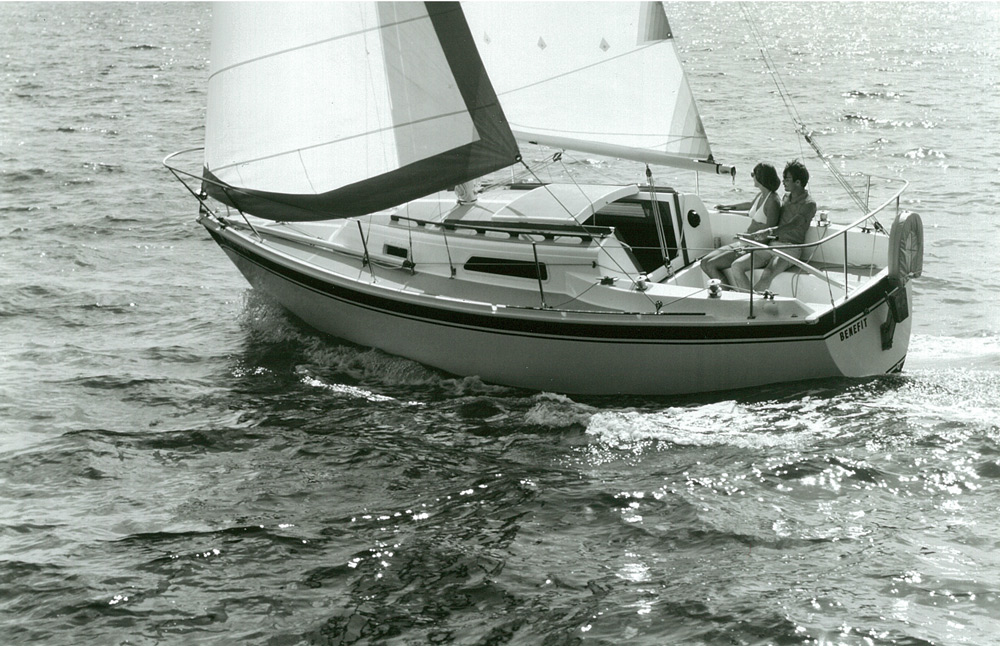
C. William “Bill” Lapworth designed both sloops and successfully incorporated suggestions into the updated model. He widened the beam from 8 feet to 9 feet, beefed up the toerail height, increased the cabin standing room, added privacy to the head, and made it possible for buyers to opt for an inboard diesel instead of an outboard engine.
From 1977 to 1983, Jensen Marine, which in 1965 was purchased by Bangor Punta Marine in Cosa Mesa, California, built 392 Cal 25-2s, many of which can be found sailing in California, Texas, the Great Lakes and the southern reaches of the Eastern Seaboard.
First impressions
The Cal 25-2 is Lapworth’s second-generation cruiser. Unlike the original Cal 25, which featured a trunk cabin and was recognized for its flat-top deck, the Cal 25-2 has a raised cabin and a distinctly different profile.
At first glance, the newer design incorporated wider side decks that made it easier for sailors to move fore and aft, and the shrouds were attached inboard rather than to the outside of the hull, further clearing the side deck passageway. The toerails were beefed up to a height of nearly 2 inches.
More surprises were in store below deck. The interior was reconfigured with 5 feet 10 inches of headroom in the saloon, and 5 feet 6 inches in the head, which previously had no privacy screen. The V-berth was made roomy enough for two full-size adults, so it became possible for a small family to cruise comfortably for more than an overnight.
Construction
The Cal 25-2 was constructed using the traditional hand-laid fiberglass layering process. It is considered a sturdy boat that has withstood the test of time. The design featured a fin keel with spade rudder and tiller steering. The keel encapsulated 2,000 pounds of lead, eliminated concern about failing keel bolts and giving the well-balanced hull a displacement of 4,500 pounds.
What to look for
Like any older boat, the Cal 25-2 may exhibit wear from general use, repeated seasonal haul outs and relaunchings that cause the hull to flex or distort, and lax maintenance. Some owners have expressed concern about excessive mast compression as evidenced by fiberglass crazing at the maststep on deck or near the interior cabin liner just beneath it. Potential buyers should inspect for cabintop sag in that area. Indicators of excessive compression also include slack standing rigging and failure of the sliding head privacy door to operate smoothly. Through-hull fittings should also be inspected for wear and standing rigging checked for swage cracks. Based on reports from owners, the electrical system may also require attention if it was improperly installed after the original purchase.
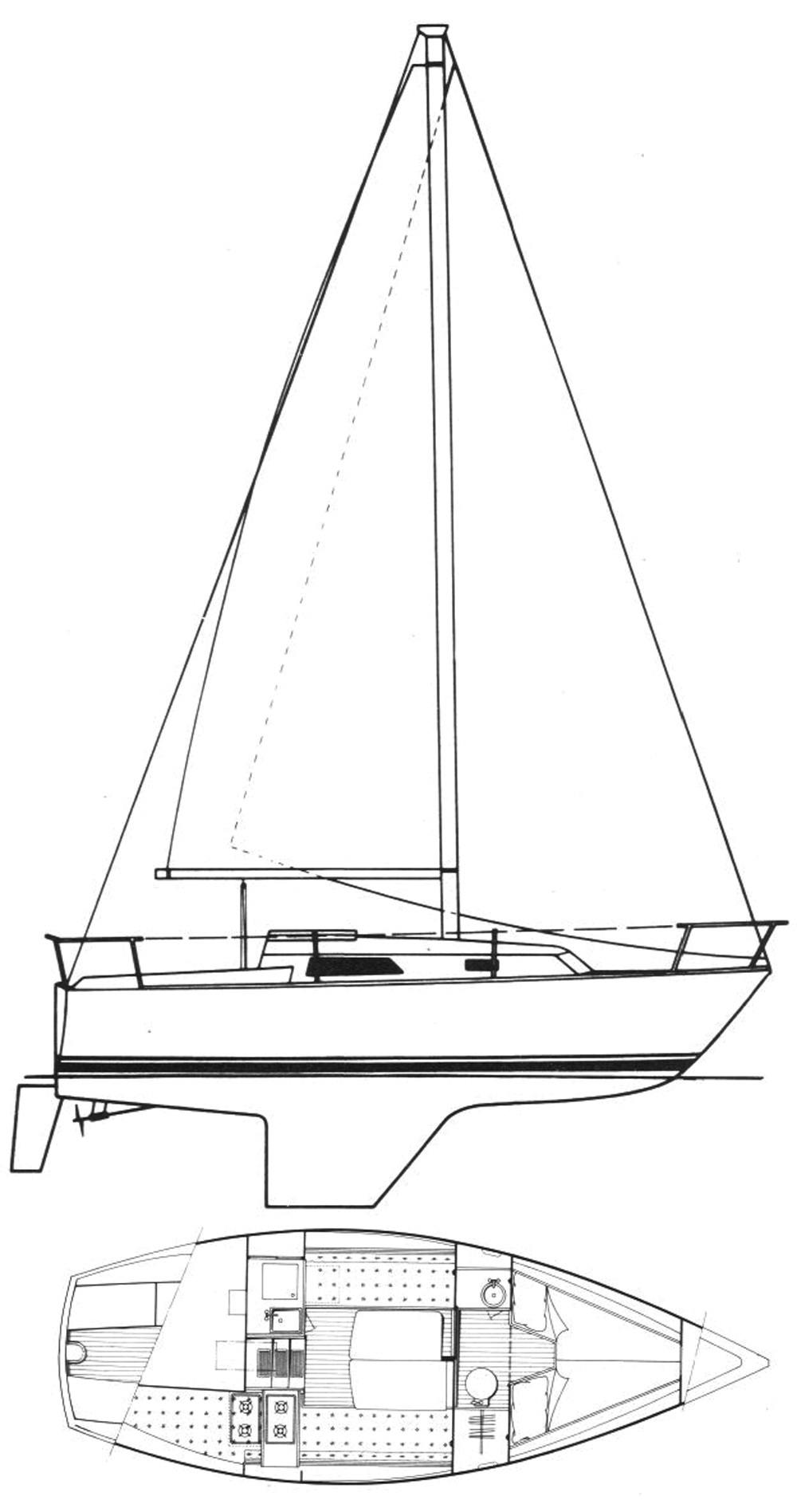
Any spongy areas on the foredeck could be the result of water infusion in the fiberglass layers and subsequent delamination, often caused by leaky chainplates.
“Cal did a very good job with delamination by getting the excess resin out during production,” said Tennessee yacht broker Chris Rooke who has two Cal 25-2s in his inventory.
The Cal 25-2 is a well-designed and nicely equipped masthead sloop. Although only 25 feet long it has the appearance of a larger boat, partially due to its 9-foot beam that allows for wide decks. The traveler is located on the bridgedeck just before the opening to the companionway, where it doesn’t interfere with those seated in the cockpit.
The boat has tiller steering. Stainless bow and stern pulpits along with stainless stanchions provide a rugged support system for the boat’s lifelines. A stainless swim ladder is attached to the stern.
Although the original winches are not self-tailing, they are strategically positioned and adequate in number, as are the cleats. The cabintop features wooden grabrails, the foredeck a hinged hatch.
Rooke has sold several Cals over the past 20 years and he’s quick to point out the main cabin in the Cal 25-2 “isn’t simply big, it was laid out to be lived in.” He noted, for example, the head compartment closes with a sliding door, ensuring privacy without sacrificing valuable cabin space. The boat has five full-size berths—two settees, a quarter berth and room for two adults in the V-berth. The galley is laid out efficiently with a 4.5-cubic foot icebox, two-burner alcohol stove, single-basin stainless sink, and a 21-gallon freshwater tank. Dinner is served on a fold-down dinette table.
While the original Cal 25 relied on an outboard engine, the Cal 25-2 offered the options of a 15-horsepower gasoline OMC Saildrive, an 11-horsepower Universal 5411 inboard diesel, or an 11-horsepower Yanmar inboard diesel. Like any engine, it should be inspected for oil and fuel leaks, worn belts, tired gaskets, secure mounting bolts and overall alignment.
The Cal 25-2 performs remarkably well in light winds, mostly thanks to its tall rig, generous 314 square feet of sail area, flat bottom and balanced keel. The mainsail is on the small side, making it easy to handle and pair with a variety of headsails or roller-furling adjustments. The boat has a traveler and boom vang to help tweak the sails.
We had the opportunity to sail a Cal 25-2 last summer in windy San Francisco Bay. It was easy to see why fans of this boat describe it as nimble and balanced. The deep keel and wide beam make it less tender. Sailing downwind was effortless. The boat also points nicely, as we found during a fast run from the San Francisco Marina to Sausalito and a jog around Alcatraz and Angel Island. Waves splashed the cockpit whenever we were on a beam reach. And since the bay has a strong tide near the Golden Gate Bridge, it wasn’t surprising the boat pounded as we headed upwind in a chop.
Roomy below deck, ruggedly constructed, affordable and fun to helm, the Cal 25-2 sails like a bigger boat, making it an ideal choice for daysailing or coastal cruising with a small family.
LOA 25’3”; LWL 22’; Beam 9’; Draft 4’6”; Draft shoal 3’6’; Displacement 4,500 lb.; Ballast 2,000 lb.; Sail area 314 sq. ft.
SAILING’s Value Guide
(5-sailboat rating system)
PRICE: The asking price for a Cal 25-2 ranges from $5,000 to $10,000. (3.5 sailboats)
DESIGN QUALITY: The Cal 25-2 was designed by C. William “Bill” Lapworth and is often cited for its comfort, efficiency, roominess and ease of handling. The boat features a spade rudder and fin keel, and is known for its well-balanced helm. Lapworth was responsible for many Cal designs, including the most-popular Cal 20 and the much-admired Cal 40. (3.5 sailboats)
CONSTRUCTION QUALITY: Jensen Marine, purchased by Bangor Punta Marine in 1965, built the boats in California with hand laid-up fiberglass and quality materials, including stainless steel, aircraft-grade aluminum and interior teak. (3 sailboats)
USER-FRIENDLINESS: Known for its responsiveness and balance, the Cal 25-2 features roller furling and a boom vang. Owners say the tiller is so balanced a 60-pound person can easily handle the boat in 25 knots of breeze. (3.5 sailboats)
SAFETY: The 9-foot beam and wide side decks with inboard shrouds make it easy for sailors to move fore and aft. The cockpit offers protection from the weather and features a bridgedeck to keep water from entering the cabin. (3 sailboats)
TYPICAL CONDITION: The condition of a Cal 25-2 can range from needing only TLC to a boat needing costly upgrades, such as self-tailing winches, upgraded electronics and instrumentation, self-steering system and new sails. (2.5 sailboats)
REFITTING: Many owners have added self-tailing winches, replaced the portable toilet, upgraded the stove to non-pressurized alcohol, added self-steering and brought control lines back to the cockpit. (2.5 sailboats)
SUPPORT: The Cal 25 Owners Association www.Cal25.org maintains an active presence online. Jensen Marine is no longer in business. (3.5 sailboats)
AVAILABILITY: Five Cal 25-2s were for sale in the U.S. in early 2019. The boat was in production for seven years from 1977 to 1983, and 392 boats were built. Another version under license was built and sold in Brazil as the Martinique 25, which had a shoal draft of 3 feet, 5 inches. (2.5 sailboats)
INVESTMENT AND RESALE: Given that a Cal 25-2 in top condition sells for between $8,000 and $10,000 and has all the features of a 27-footer, makes it a great buy for a used compact cruiser. The boat is a great value, as one broker put it, “You couldn’t make a Cal 25 with an inboard diesel today for less than $95,000.”(3 sailboats)
Overall SVG Rating: 3 sailboats
Also in Used Boat Notebook
- Hunter Passage 42
- Pearson Rhodes 41
- Santa Cruz 52
- Allied Princess 36
- Kelly-Peterson 46
Also from David Liscio
- Chasing a dream
- The wide, wide world of multihulls
- Flares are expired. Now what?
- Saved from the scrap heap
- Pedal to the Medal
The Cal 25 is a 25.0ft masthead sloop designed by C. William Lapworth and built in fiberglass by Jensen Marine/Cal Boats between 1965 and 1976.
1848 units have been built..
The Cal 25 is a moderate weight sailboat which is a good performer. It is very stable / stiff and has a low righting capability if capsized. It is best suited as a day-boat.
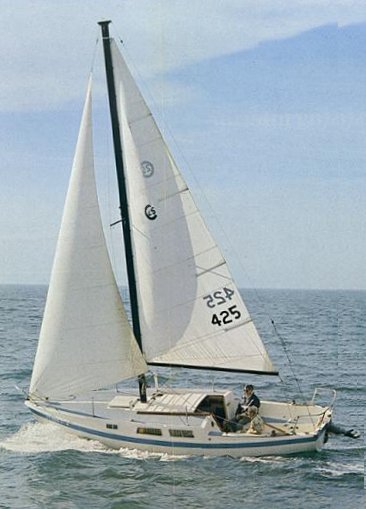
Cal 25 for sale elsewhere on the web:

Main features
Login or register to personnalize this screen.
You will be able to pin external links of your choice.

See how Sailboatlab works in video

We help you build your own hydraulic steering system - Lecomble & Schmitt
Accommodations
Builder data, other photos.
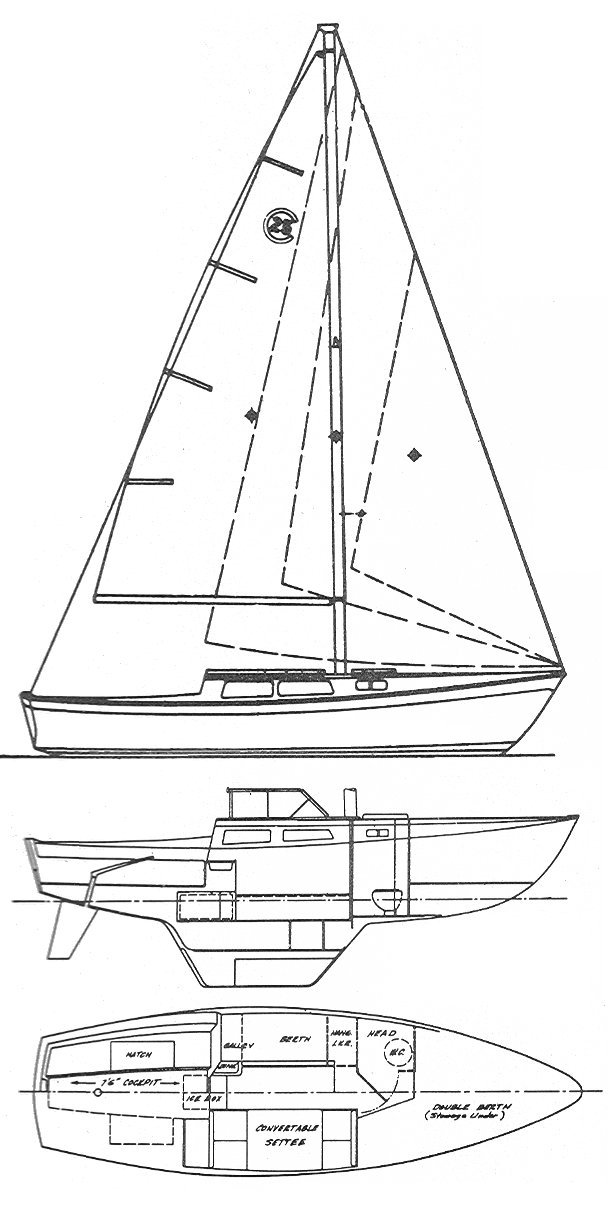
Modal Title
The content of your modal.
Personalize your sailboat data sheet
Great choice! Your favorites are temporarily saved for this session. Sign in to save them permanently, access them on any device, and receive relevant alerts.
- Sailboat Guide
1981 Cal 25
- Description
Seller's Description
Reubilt engein and transmisson 2020.Lived on the boat since 2012.
Rig and Sails
Auxilary power, accomodations, calculations.
The theoretical maximum speed that a displacement hull can move efficiently through the water is determined by it's waterline length and displacement. It may be unable to reach this speed if the boat is underpowered or heavily loaded, though it may exceed this speed given enough power. Read more.
Classic hull speed formula:
Hull Speed = 1.34 x √LWL
Max Speed/Length ratio = 8.26 ÷ Displacement/Length ratio .311 Hull Speed = Max Speed/Length ratio x √LWL
Sail Area / Displacement Ratio
A measure of the power of the sails relative to the weight of the boat. The higher the number, the higher the performance, but the harder the boat will be to handle. This ratio is a "non-dimensional" value that facilitates comparisons between boats of different types and sizes. Read more.
SA/D = SA ÷ (D ÷ 64) 2/3
- SA : Sail area in square feet, derived by adding the mainsail area to 100% of the foretriangle area (the lateral area above the deck between the mast and the forestay).
- D : Displacement in pounds.
Ballast / Displacement Ratio
A measure of the stability of a boat's hull that suggests how well a monohull will stand up to its sails. The ballast displacement ratio indicates how much of the weight of a boat is placed for maximum stability against capsizing and is an indicator of stiffness and resistance to capsize.
Ballast / Displacement * 100
Displacement / Length Ratio
A measure of the weight of the boat relative to it's length at the waterline. The higher a boat’s D/L ratio, the more easily it will carry a load and the more comfortable its motion will be. The lower a boat's ratio is, the less power it takes to drive the boat to its nominal hull speed or beyond. Read more.
D/L = (D ÷ 2240) ÷ (0.01 x LWL)³
- D: Displacement of the boat in pounds.
- LWL: Waterline length in feet
Comfort Ratio
This ratio assess how quickly and abruptly a boat’s hull reacts to waves in a significant seaway, these being the elements of a boat’s motion most likely to cause seasickness. Read more.
Comfort ratio = D ÷ (.65 x (.7 LWL + .3 LOA) x Beam 1.33 )
- D: Displacement of the boat in pounds
- LOA: Length overall in feet
- Beam: Width of boat at the widest point in feet
Capsize Screening Formula
This formula attempts to indicate whether a given boat might be too wide and light to readily right itself after being overturned in extreme conditions. Read more.
CSV = Beam ÷ ³√(D / 64)
Flush deck with ‘pop top’ companionway. One of the most popular CAL models. A completely different design from the later Cal 2-25.
This listing is presented by SailboatListings.com . Visit their website for more information or to contact the seller.
View on SailboatListings.com
Embed this page on your own website by copying and pasting this code.
Similar Sailboats For Sale

1965 Cal 25 Cal 25
- About Sailboat Guide
©2024 Sea Time Tech, LLC
This site is protected by reCAPTCHA and the Google Privacy Policy and Terms of Service apply.
Boat Reviews
- Boats Specs
- Marine Pros
- Boat Insurance
- Boat Warranties
- Boat Transport
- Boat Towing
- Marine Forecasts

Your Ultimate Boating Resource

1981 Cal 25 CAL
1981 cal 25 cal specs.
- Boat Type : Monohull Sailboats
- Hull Material : Fiberglass
- Beam : 9'0"
- Length : 25'
- Net Weight : 4600 lbs
- Looking for the Boat Manual? 1981 Cal Boats 25 CAL Request Boat Manual Now
Related Boats
- 1971 Cal 25 CAL
- 1972 Cal 25 CAL
- 1973 Cal 25 CAL
- 1974 Cal 25 CAL
- 1975 Cal 25 CAL
- 1976 Cal 25 CAL
- 1977 Cal 25 CAL
- 1978 Cal 25 CAL
- 1979 Cal 25 CAL
- 1980 Cal 25 CAL
- 1982 Cal 25 CAL
- 1983 Cal 25 CAL
2024 Pursuit OS 445: An Overview
Dock your boat smoothly this summer with these tips, the billionaire’s playground: where to spot superyachts around the world, summertime snack ideas for your boating adventure, de-winterize your boat the right way with these professional tips, what type of wood is used for pier pilings, what is the difference between a dock and a floating pier, what is the proper technique for pulling a beginner wakeboarder, what does ‘no wake’ mean on a lake, what is the difference between wash and wake, 10 essential tips for fishing near private property, the benefits of using a drift sock: guidance for anglers, lure fishing: secrets for imitating live bait and attracting fish, explore the untapped depths of america’s best bass fishing spots, tackle your catch-and-release adventures with these 6 tips, outboard motor maintenance: tips for keeping your engine in top shape, the essential boat tool kit: tools every boater needs, diy boat building: 8 tips and tricks for building your own vessel, the art of miniature maritime craftsmanship: ship in a bottle, antifouling paints: a guide to keeping your boat shipshape, beginner’s guide to standup paddle boarding: tips and techniques, boating for fitness: how to stay active on the water, kayak safety: how to stay safe on the water, anchoring in a kayak or canoe: how to secure your small boat, 2024 aquila 47 molokai review, 2024 sea-doo switch 13 sport review, 2024 aspen c120 review, 2024 yamaha 222xd review, 2024 sailfish 316 dc review, 2023 seavee 340z review, 2023 centurion fi23 review, gear reviews, megabass oneten max lbo jerkbait review, fortress anchors fx-7 anchoring system review, fortress anchors fx-11 anchoring system review, fortress anchors commando anchor kit review, fortress anchors aluminum anchors review, stay in touch.
To be updated with all the latest news, offers and special announcements.
- Privacy Policy
Sign up for an account
Already have an account? Log in
Login to continue
Don't have an account yet? Sign Up
Forgot your password?
Log in | Sign Up
sailboats for sale
- Sailboat Listings
- 1981-cal-25-cal-25
- Catalina (32)
- Pearson (25)
- Hunter (24)
- Beneteau (18)
- O'Day (14)
- Macgregor (12)
- C&C (12)
- Morgan (11)
- Custom (11)
- Hobie Cat (9)
- Island Packet (8)
- Capital Yachts (8)
- Pacific Seacraft (8)
- J Boats (6)
- American (6)
- Bavaria (5)
- Precision (5)
- Cape Dory (5)
- Jeanneau (5)
- Bristol (5)
- Cheoy Lee (4)
- Watkins (4)
- Islander (4)
- Hans Christian (4)
- Performance Cruising (3)
- Van de Stadt (3)
- General Boats (3)
- Ericson (3)
- Formosa (3)
- Sparkman & Stephens (3)
- Westerly (3)
- Coronado (3)
- Passport (3)
- Young Sun (3)
- Challenger (2)
- Canadian Sailcraft (2)
- Leopard (2)
- Westsail (2)
- Freedom (2)
- Bayfield (2)
- West Wight Potter (2)
- Colin Archer (2)
- Camper Nicholsons (1)
- Sea Eagle (1)
- Force 5 (1)
- Flying Scot (1)
- Sovereign (1)
- Intrepid (1)
- Dragonfly (1)
- Sailboat Trailer (1)
- Ontario (1)
- Windrider (1)
- Columbia (1)
- Nautor Swan (1)
- Endurance (1)
- Wellington (1)
- Hallberg Rassy (1)
- Caliber (1)
- Vagabond (1)
- Stevens (1)
- Wauquiez (1)
- Ron Holland Gibbs Marine (1)
- Farrier (1)
- Contest (1)
- Seidelmann (1)
- Gulfstar (1)
- Cascade (1)
- Wharram (1)
- Palmer Johnson (1)
- Endeavour (1)
- Admiral (1)
- Nauticat (1)
- Durbeck (1)
- Seafarer (1)
- Corsair (1)
- Soverel (1)
- Ta Shing (1)
- Bruce Roberts (1)
- Southern Cross (1)
- Lord Nelson (1)
- Ocean Cruising (1)
- Downeaster (1)
- Peterson (1)
- United States (350)
- Canada (15)
- Caribbean (15)
- Mexico (14)
- French Polynesia (4)
- Colombia (2)
- Guatemala (2)
- Belgium (1)
- Germany (1)
- Portugal (1)
- Croatia (1)
427 listings found
- Featured First
- Price: Low to High
- Price: High to Low
- Year: Oldest to Newest
- Year: Newest to Oldest
- Length: Short to Long
- Length: Long to Short
- Date Added: Newest
- Date Added: Oldest
- Recently Sold

1991 Mason 44 | Whitecap Fort Pierce, Florida, United States
1990 Ovni 35 | Sailavie St. Petersburg, Florida, United States
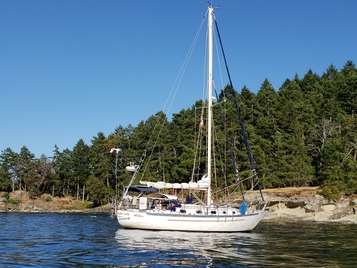
1989 Pacific Seacraft 34.1 | ALTHEA Anacortes, Washington, United States
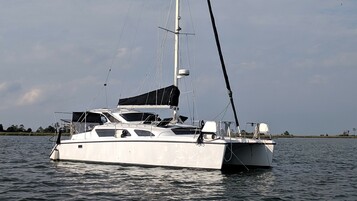
2001 Gemini 34 | Coddiwomple Anacortes, Washington, United States
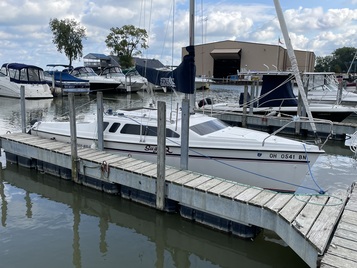
1995 Hunter 23.5 | SuzyQ Amherst, Ohio, United States
.pdf.jpg)
1985 Hobie Cat 18 | HobieCat Dennis, Massachusetts, United States
Looking to sell your sailboat.
Post your sailboat for free and find a buyer.
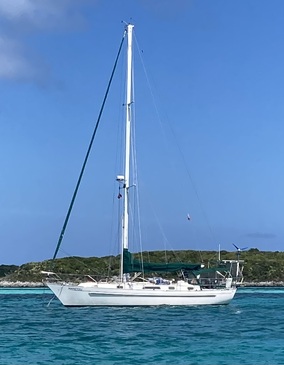
1984 Passport 40 | Manitou Tracys Landing, Maryland, United States
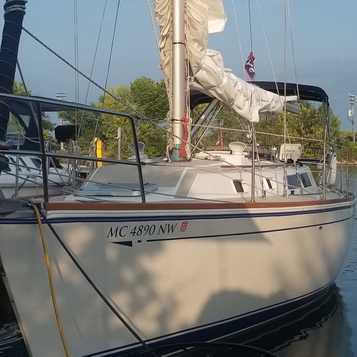
1987 Cal 33 | R & R Detroit, Michigan, United States
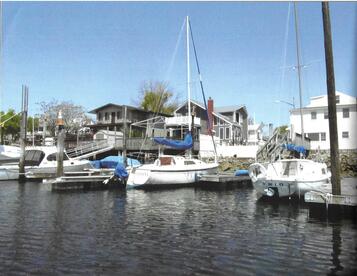
1984 O'Day 26 | sardine brooklyn, New York, United States

1984 Watkins 25 | Watkins Barnegat Township, New Jersey, United States
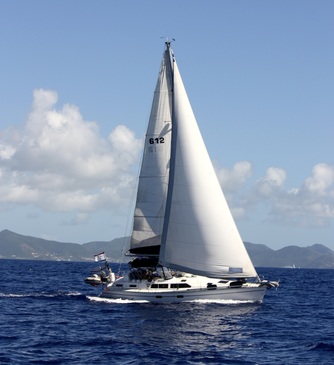
1992 Hunter 42 | Wahoo Anse aux pines, Grenada, Caribbean
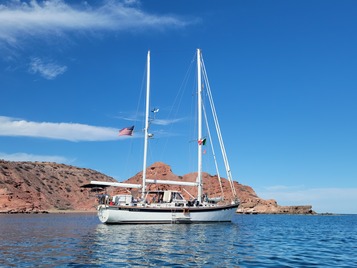
1983 Challenger 60 | Magic Carpet Norfolk, Virginia, United States
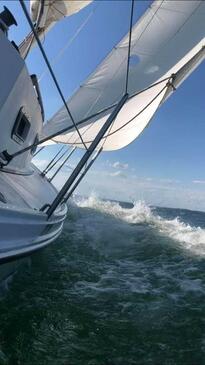
1984 Van de Stadt 27 | Siren Song Hartwell, Georgia, United States
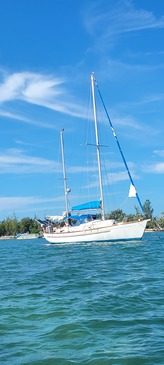
1978 Morgan 45 | Miller Time Vero Beach, Florida, United States
2002 Bavaria 44 | Gente di Mare Lindon Bay, Colón, Panama

2013 Leopard 48 | Paradise St. Petersburg, Florida, United States
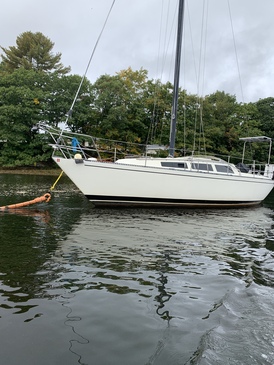
1978 S2 30 | Trinity heart Boothbay Harbor, Maine, United States

2010 Island Packet 26 | Robert J Worton, Maryland, United States
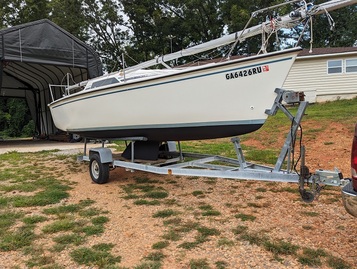
1988 Hunter 23 | Smurfette Murrayville, Georgia, United States
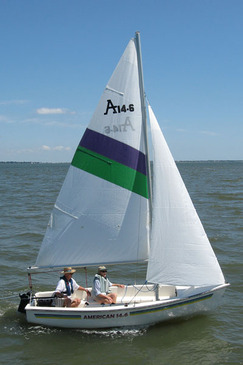
2017 American 14 | American 14.6 Seneca, South Carolina, United States
1979 Capital Yachts 30 | Sorrento's Siren Long Beach, California, United States
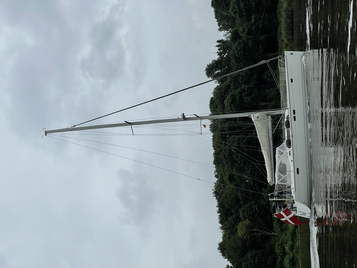
2006 Hanse 54 | Tikki Papeete, Tahiti, French Polynesia
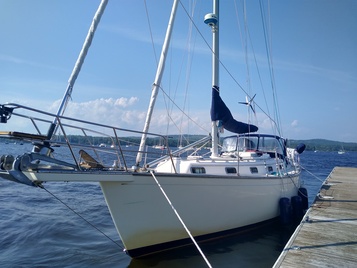
1987 Island Packet 38 | Lost Horizon Stockton Springs, Maine, United States
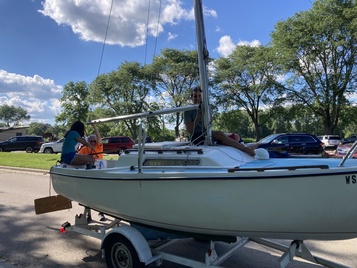
1973 Macgregor 17 | Dawn Treader Madison, Wisconsin, United States
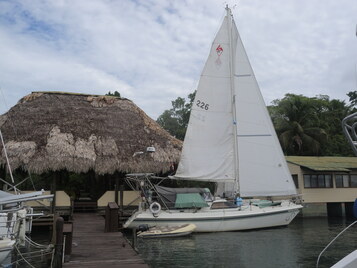
1982 Tanzer 39 | L'Eau-Dace 4 fronteras, Guatemala, Guatemala
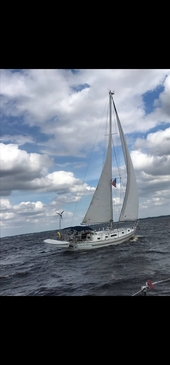
1983 Passport 40 | Peppin Jacksonville, Florida, United States
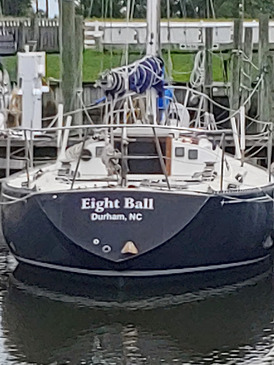
1974 C&C 34 | 8 Ball Oriental, North Carolina, United States
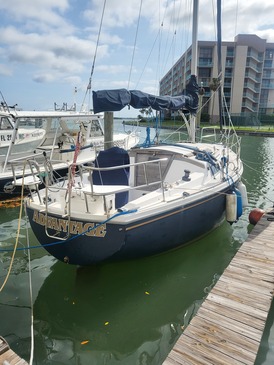
1983 Catalina 30 | Advantage Treasure Island, Florida, United States
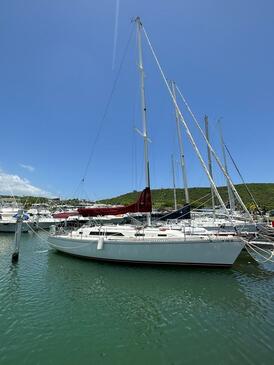
1988 Farr 40 | Aura Fajardo, Puerto Rico, United States
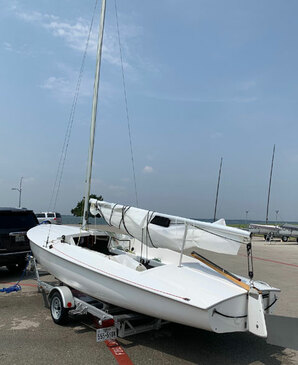

2020 Flying Scot 19 Dallas, Texas, United States
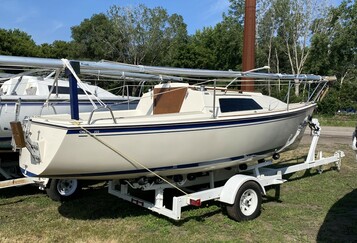
1985 O'Day 22 White Bear Lake, Minnesota, United States
2008 Tartan 41 | MAKASI Le Marin, Normandy, France
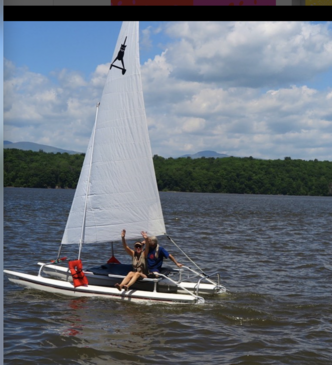
2018 American 14 | Aqua Cat North Miami, Florida, United States

1986 Custom 34 | ditto Washington, Illinois, United States

1982 C&C 35 Port Charlotte, Florida, United States
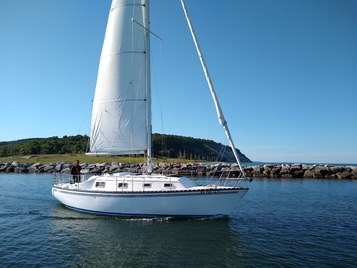
1982 Hunter 30 Arcadia, Michigan, United States
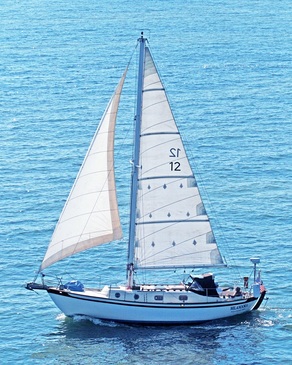
1976 Southern Cross 31 | Milanooka Sandusky, Ohio, United States
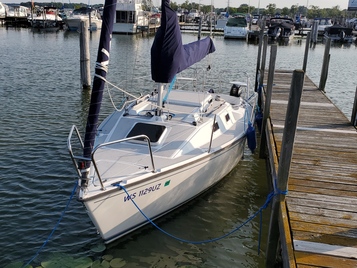
2017 Precision 21 Oshkosh, Wisconsin, United States
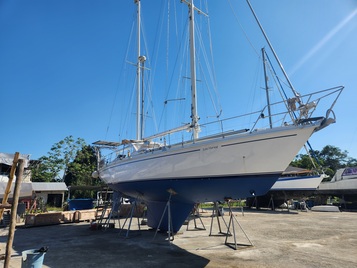
1985 Amel 46 | Late Harvest Titusville, Florida, United States
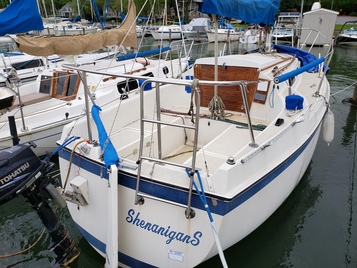
1982 O'Day 25 | Shennigans Mooresville, North Carolina, United States
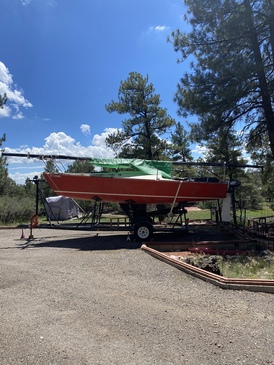
1982 J Boats 24 | Na Durango, Colorado, United States
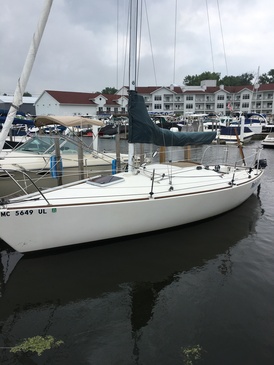
1984 J Boats 24 | Pair a docs New Buffalo, Michigan, United States
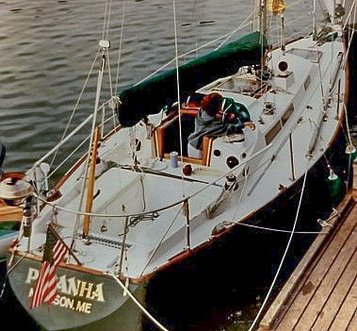
1974 Ocean Cruising 31 | Pirhana Rockport, Maine, United States
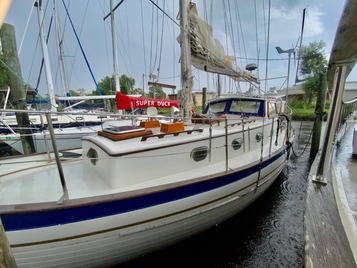
1979 Performance Cruising 33 | Amesias Mandeville , Louisiana, United States
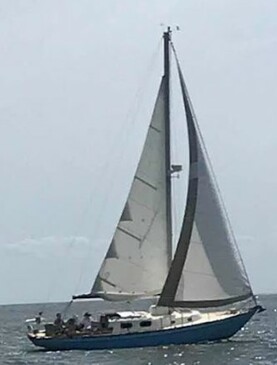
1967 Pearson 35 | Maui Old Saybrook, Connecticut, United States
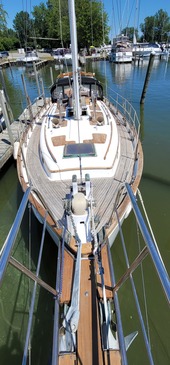
1981 Lord Nelson 41 | Wysteria LaSalle, Michigan, United States
1950 American 16 | Glen-L-Zip Lunenburg, Massachusetts, United States
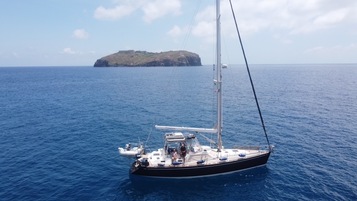
2003 Sparkman & Stephens 43 | Windarra Gaeta, Lazio, Italy
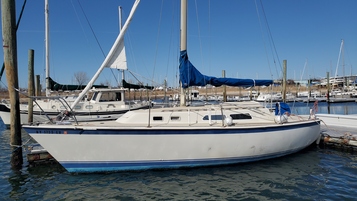
1979 O'Day 30 | Oasis New York, New York, United States

1977 C&C 24 | Nifty Perth Amboy, New Jersey, United States
- New Sailboats
- Sailboats 21-30ft
- Sailboats 31-35ft
- Sailboats 36-40ft
- Sailboats Over 40ft
- Sailboats Under 21feet
- used_sailboats
- Apps and Computer Programs
- Communications
- Fishfinders
- Handheld Electronics
- Plotters MFDS Rradar
- Wind, Speed & Depth Instruments
- Anchoring Mooring
- Running Rigging
- Sails Canvas
- Standing Rigging
- Diesel Engines
- Off Grid Energy
- Cleaning Waxing
- DIY Projects
- Repair, Tools & Materials
- Spare Parts
- Tools & Gadgets
- Cabin Comfort
- Ventilation
- Footwear Apparel
- Foul Weather Gear
- Mailport & PS Advisor
- Inside Practical Sailor Blog
- Activate My Web Access
- Reset Password
- Customer Service

- Free Newsletter

Hunter 35.5 Legend Used Boat Review

Pearson Rhodes 41/Rhodes Bounty II Used Sailboat Review

Hallberg-Rassy 42 Used Sailboat Review

How to Perform Your Own Pre-Buy Inspection

Thinking Through a Solar Power Installation

How Does the Gulf Stream Influence our Weather?

Can You Run a Marine Air-Conditioner on Battery Power?

Preparing Yourself for Solo Sailing

Practical Sailor Classic: The Load on Your Rode

Anchor Rodes for Smaller Sailboats

Ground Tackle Inspection Tips

Shoe Goo II Excels for Quick Sail Repairs
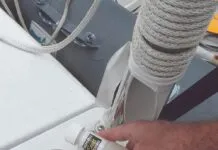
Diesel Performance Additives

What Oil Analysis Reveals About Your Engine
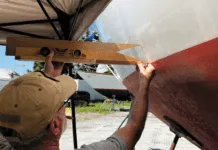
Painting a New Bootstripe Like a Pro

Penetrating Epoxy—Another Marketing Gimmick?

The Best Tools for Bottom Painting
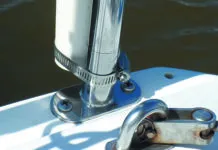
The Hidden Maintenance Problems That Can Ruin Your Day: Part 1
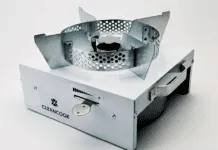
Alcohol Stoves— Swan Song or Rebirth?
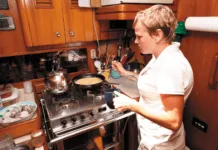
Living Aboard with an Alcohol Stove

Choosing the Right Fuel for Your Alcohol Stove

How to Select Crew for a Passage or Delivery

Preparing A Boat to Sail Solo

Re-sealing the Seams on Waterproof Fabrics

Waxing and Polishing Your Boat

Reducing Engine Room Noise

Tricks and Tips to Forming Do-it-yourself Rigging Terminals

Marine Toilet Maintenance Tips

Learning to Live with Plastic Boat Bits
- Sailboat Reviews
The Catalina 25
Like most catalinas, the 25 represents good value for the money, but sailing performance and construction quality are average at best..
[Updated December 6, 2018]
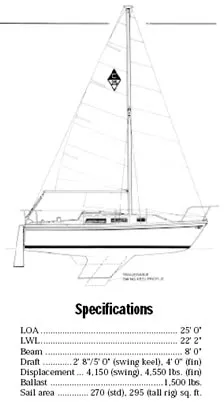
The Catalina 25 is not exceptionally fast, stylish, or spacious compared to newer widebody models, and while the construction and workmanship are adequate, they too are not exceptional. But because of the builders strict adherence to a philosophy of offering a relatively spacious design, relatively well made, at a reasonable price, and backing up the product with generally good customer service, the Catalina 25 has turned out to be one of the most successful small cruising sailboats ever built, with 5,332 boats sold between 1976 and 1990, when the company ceased producing the model as demand tailed off.
The Catalina 25 Design
During those 14 years of production, the design went through a complete metamorphosis, starting out as a very simple and inexpensive trailerable swing-keel design, and ending as a relatively sophisticated minicruiser. As vice-president and chief designer Gerry Douglas says, The last boats we built had diesel inboards, hot and cold pressure water systems, and extremely complex electrical systems. They were like little Catalina 34s. It was what people wanted in the late 1980s.
If you consider all model years, you can find Catalina 25s with five different keel configurations: cast iron swing-keel, cast iron fixed keel, cast lead wing keel, cast lead fin keel without glass jacket, and in later boats, a lead keel encased in fiberglass. In the later boats there was a choice of fin keel, wing keel, or swing keel, and standard rig or tall rig. However, the swing-keel model, with a board-up draft of 2′ 8″, accounted for well over half of total production. Most Catalina buyers over the years have been cruisers rather than performance-oriented racers, and for many cruisers, the attractiveness of a boat suitable for shoal waters and trailering is undeniable. Relatively few Catalina buyers are avid racers, it seems. If the hundred or so owners who answered our survey request are an indicator, only a small percentage rate as important either the fin keels much more efficient foil shape and lower turbulence, or the greater light-air efficiency of a two-foot longer tall rig mast that increases sail area by almost 10 percent.
As the design developed over time, features changed enough so that in a number of respects the early boats are very different than 1987 and later model years. As a consequence, its imperative for prospective buyers to know what model year theyre looking at when shopping for used boats. Prices can vary from less than $5,000 to more than $16,000, not only dependent on condition, but also model year and features.
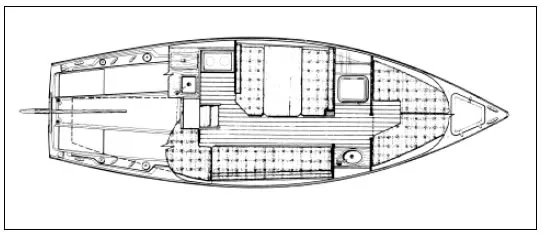
For example, at various times there was a choice of two different interiors: a dinette arrangement, and opposing settees. A flip-top (Catalinas version of the pop-top), which provided standing headroom, was a popular feature that was optional until 1987, at which time it became standard. In fact, in 1987 the entire boat underwent a major design change, yielding among other things a more contemporary deck and a more refined interior, with less teak and more fiberglass.
Performance and Handling of the Catalina 25
The Catalina 25, with a PHRF rating of around 228 for the standard rig or 222 for the tall rig, is not especially fast for its size. In fact, the swing-keel version, which is noticeably slower upwind than the fin-keel version, probably deserves an even higher time allowance than its been given. The fin keel is generally acknowledged to sail close to its rating, at least once the breeze pipes up to 10 knots or so. The swing keel is not as hydrodynamically sleek, and the keel lifting cable is out in the open where it causes extra drag, intensified if seaweed gets hung up on it.
The boat (especially the keel version) balances relatively well, tracks satisfactorily, and is quite maneuverable if sails are properly trimmed; it can be unforgiving if they are not. Several owners com plained to us of a heavy weather helm in a breeze.
The tall rig is a bit more tender than the standard rig, but definitely adds speed in light air. One just reefs a little earlier to maintain helm balance. But despite its virtues, the tall rig has a drawback mentioned by several owners: Unless you have a sailmaker chop off the bottom 12″ of the sail, the boom swings too low over the cockpit. This, however, may be the fault of some sailmakers; the consensus is that Catalina-supplied sails were not as well-made or well-shaped as those obtained from other sailmakers.
Under power, the Catalina 25 will make about 5- 1/2 knots with a 6-hp. outboard, and you can coax an extra 1/2 to 3/4 knot or so out of the boat with an 8- hp. or 9.9-hp. engine. (Theoretical maximum hull speed in ideal conditions is around 6.3 knots.)
The outboard is mounted on a fold-up transom bracket mounted off center to accommodate the outboard rudder. Some owners complained that the motor is difficult to raise and lower. Others observed that, in rough seas, when the boat pitches, an ordinary 20″ shaft outboard prop has a tendency to ventilate, particularly if the auxiliary is used under sail and the boat heels away from the side on which the engine is mounted. The owner consensus is that a 25″ extra long shaft largely solves that problem.
An inboard diesel engine would also solve the problem, but is not recommended; an owner of a 1986 model equipped with a 10-hp. Universal engine reports his boat is very slow under power, at least with the two-blade prop hes currently using. A three-blade prop might help, but would also significantly increase drag under sail.
Another disadvantage of the transom-mounted outboard is that its difficult for the helmsman to control. One owner who told us hed rigged remote engine controls in the cockpit said, Its the best thing weve done.
The boat needs to be reefed in 15 knots of wind (a jiffy reefing main was standard in later boats, though a roller furler for the jib was not). Above 15 knots, weather helm becomes very heavy if the main is left unreefed; one owner observed that she tends to round up in strong winds, or if heeled more than 15 degrees.
A short traveler is integrated into the stern pulpit, and although this works well while cruising, and
permits use of a bimini to protect crew from too much sun, mid-boom sheeting and a mid-cockpit traveler work better for single-handed daysailing and racing. Consequently, many owners have added the inboard traveler, some with a snap-on mainsheet block so they can switch back and forth.
A peculiarity of the design is that the distribution of the boats components evidently caused listing, in some boats to starboard, in others to port. For example, in the 1981 dinette model, owners complained that the dinette, engine, fuel tank, galley, and head were all on the port side, causing the boat to list noticeably to port. Catalina evidently took these complaints to heart, but the results were not totally effective; an owner of a 1982 model complained that batteries, holding tank, and outboard on the starboard side produced a list in that direction.
Other owner responses to our questionnaire included the following:
The absence of a bridge deck is a possible safety hazard when sailing offshore in a big following sea.
Narrow (7″ wide) sidedecks make going forward somewhat difficult. So do the 22″ high stanchions when the boat is heeled, impeding passage forward on the high side; shorter stanchions would help, but wouldnt be as safe.
The lifelines don’t lead to the top of the bow pulpit, but instead run to the deck at the bow to provide a slot for a deck-sweeping genoa. This can make the foredeck area insecure in adverse weather conditions. Bails on the top of the pulpit and pelican hooks on the lifelines would be an improvement, since it would then be possible to raise the lifelines in heavy weather or when a high-clew jib is being used.
Catalina 25 Interior
Compared to other boats available in the 1970s an early 1980s, the Catalina 25 is relatively spacious below, though some readers complained that the aft double is really only a single quarter berth and that the port side settee berth is not long enough for an adult. Newer beamier designs, of course, have the advantage of more elbow room below.
At least one owner improved sleeping accommodations by building a plywood platform which fits between the table on the port side and the settee on the starboard. The aft berth cushion, under the cockpit sole, was shortened slightly to fit on this platform. When in place, the platform results in an athwartships berth about 6′ 4″ long and 5′ 1″ wide, big enough for a double sleeping bag. When not in use, the plywood platform stows on the aft berth.

Light and ventilation below is very adequate, as long as theres a breeze from forward. Because the forward hatch slopes down the forward edge of the cabin trunk, when open it becomes a very effective windscoop. Boats with pop-tops have additional ventilation.
The pop-top was an extra-cost option, and a very popular one. Reader praise of the pop-top is almost universal, with comments from Buyer interest is much higher on boats with pop-tops to Contrary to what some folks say, this pop-top does not leak in the rain or spray. Headroom is 6′ 4″ with the pop-top raised.
Until the 1983 model year, when the company redesigned the icebox so it would, as one owner reported, keep block ice for three days, the icebox was severely under-insulated; many owners reported that it would only hold ice for less than a day. Another complaint was that the icebox drains directly overboard, and as a consequence, if the drain is left open when the boat heels, water enters the icebox. One reader killed two birds with one stone: We keep our trash in the built-in cooler where it is out of sight, and use an Igloo cooler which is bigger and works better.
Construction of the Catalina 25
The Catalina 25 has a full fiberglass hull liner, which makes it easier to keep the boat clean but at the same time can make repairs and adding owner-installed custom components more difficult.
Several owners judged that Florida-built Catalina 25 hulls, though adequate in strength, are not as well finished as the California-built boats. And several others commented on gel coat chipping and cracking, voids, pits, and crazing, particularly in stressed areas such as at sharp changes of direction in the cockpit, and corners of hatch covers, though these problems didnt seem to be a function of builder location.
Bottom blistering seems to have been a fairly common problem on Catalina 25s when an epoxy bottom coat had not been applied under the antifouling paint to prevent water incursion. Catalina now has a 10-year no-blister warranty, but during the era of the Catalina 25, the company had a five-year warranty with gradually diminishing payments during the period. Judging from reader response to our questionnaire, some owners were not entirely satisfied with that arrangement.
In the swing-keel version, Catalina used an ordinary galvanized steel trailer winch to hoist the keel, and although there are no doubt some 20-year-old boats that still have the original winch, many owners have had to repair or replace some or all of it, particularly when the boat is sailed in saltwater.
Another problem with early swing keel models involved breaking the pennant. At the lifting point on the trailing edge of the swing-keel there is a tapped hole on a flat area into which screws a stainless steel eye. A swaged fork fits over the eye and pivots on it as the keel swings up or down. The factory fixed the eye in place with Loctite, but over the years the eye could rotate, so that the clevis pin became parallel to the keel instead of perpendicular to it. Then it would bind, and eventually end up bending and then breaking the wire at the joint of the wire and the swaged fitting. To solve the problem, Catalina came up with a device to keep the eye from rotating, but some older boats may not be retrofitted. Owners and prospective buyers of older boats should examine the swing keel to be sure the eye is solidly fixed in place.
Several owners complained that there is no mechanical lock to stop movement of the swing keel,
which even at anchor can move laterally in its trunk, banging, thumping, and making it, according to one owner, hard to sleep through the night. Catalina offers a retrofit kit to alleviate the problem, composed of nylon or neoprene washers -but according to some owners, this cure is only partially effective.
The surface of the cast iron swing keel was said by some of the performance-oriented owners to be comparatively rough as it came from the factory. They advise filling and sanding fair and smooth for better sailing speed. We would add that the keel should be checked regularly for corrosion, and an epoxy barrier coat should be maintained on the surface to prevent excessive rusting and deterioration.
Deck and cabin hardware, while generally adequate, is considered sub-par by some owners, particularly on the early models. For example, the type of closed-barrel turnbuckles Catalina used are hard to inspect without disassembly, and as a result tend to corrode internally, sometimes freezing or completely failing. Later models have the open-barrel type, which is preferable.
The forward hatch for several model years was attached with self-tapping screws rather than throughbolted, causing the hatch to become loose in some cases. By 1983, bolts had replaced the screws. Other relatively common complaints include rusty screws on deck fittings, broken boom goosenecks, insufficient bow eye backing plates, tillers splitting (on one boat the tiller split twice), and problems with rudders delaminating and splitting along the edge.
A particularly common problem noted is that rudder gudgeons and pintles break or come adrift
from the transom. The repair involves installing a handhole inspection port on the inside of the transom to gain access to the fastening bolts. One reader said his lower pintle had broken under racing conditions, but that he had cured the problem by adding a third pintle and gudgeon halfway between the top and bottom fittings.
Several other readers reported that their boats had loose gudgeon bolts, stress cracks in the transom at the gudgeon attachment points, and transom leaks. One owner reported the transom cracked below the motor bracket because of lack of reinforcement behind the bracket.
The hull-deck joint on some models used selftapping screws rather than through-bolts. Several readers experienced rain and spray leaks along the rail. Portlights also have been a source of leakage problems, as have cockpit scuppers, rudder gudgeons, and various pieces of dealer-installed deck hardware, mostly due, we guess, to inadequate bedding procedures and backup plates.
Trailering the Catalina 25
Despite the fact that a bare Catalina 25 weighs approximately 4,150 lbs., the boat plus trailer, loaded for a weeks cruise, can easily weigh over 6,000 pounds. That means its necessary to tow with a big pickup or van equipped with a towing package, and virtually eliminates prospective trailer-sailors who only have access to an ordinary passenger vehicle, no matter how powerful. (An exception: Big cars built before the advent of downsizing and integral frames. For example, one reader says he pulls his 6,000-lb. rig successfully with a 1973 Olds 98).
The Catalina 25s mast is deck-stepped on a hinge, but several readers complained that no factory method is offered to make mast-raising safer and easier. Still, some owners have devised their own systems, with which they seem to be satisfied. One who made extensive modifications figures it takes him a mere 45 to 60 minutes from the time he pulls into the parking lot at the launching ramp until hes sailing away-and only a little longer than that to reverse the procedure.
One reader pointed out that with the swing keel model the rudder is deeper than the retracted keel (unless its a folding rudder, which Catalina offered as an option in some model years), which can produce problems at the launching ramp under some conditions. Another owner feels that his fin-keel is as easy to ramp-launch as a swing keel, provided an extra-long trailer tongue extension is used. We think that might be true on some ramps, but not on others.
If youre shopping for a Catalina 25 already equipped with a trailer, check the GVWR (Gross
Vehicle Weight Rating) decal before you buy. It indicates the loaded weight of the trailer in pounds, i.e. the sum of the carrying capacity of the trailer plus the weight of the trailer itself. One reader ordered (from a Florida dealer) and paid for a trailer with a 7,000 lb. capacity rating. What he got was one rated for only 5,000 lbs. He was prompted to check the decal because, he says, The trailer looked skimpy. He weighed the combination with the boat stripped and it came to 5,620 lbs. The dealer claimed it was the same trailer they always use for this boat an the dealer passed me off to the Florida plant, who passed me off to the trailer manufacturer, who finally made good after Frank Butler got into the act-after seven months of hassling.
New or unseasoned sailors making their first or second foray into the boat-buying game may find that the Catalina 25 is an attractive choice. The boat is relatively easy to handle, can be single-handed without too much trouble, and while not fast in the racing sense, is fast enough to satisfy many cruisers. The interior is big enough for two to cruise in relative comfort, while the overall size of the boat is not daunting to most newcomers to the sport. Other advantages for new sailors are that Catalina, in most cases, does a good job with customer service, and theres a quarterly 100-page glossy publication for all Catalina owners (from 8′ Sabots to all the way to Catalina 42s) called Mainsheet which offers support and helps to keep communications open between owners.
Asking prices on used Catalina 25s range from around $4,000 for older (late 1970s) models that probably need some work, to around $16,000 for newish (late 1980s) models fully equipped and in like-new condition, probably with an inboard engine and a trailer included. A price of $7,000 to
$8,000 is typical for early to mid-1980s boats, though we noticed a wide range, presumably based on condition and accessories.
Prospective buyers should check for bottom blisters (which can be expensive to repair), evidence of problems around the keel bolts or pivot on the swing keel, rudder connection problems, cracks in turnbuckles or rigging terminals, leaks around windows and hull-deck connection, and other common (and correctable) flaws.
Also check for which of the many extra-cost options have been installed-options which many experienced sailors would say should have been standard: boom vang, genoa winches, pop-top with canvas enclosure (originally two separate options), basic electrical system with running lights and cabin lights, galley equipment, head, lifelines and stanchions, and sails. Check especially the brand of sails; many readers report that they have been dissatisfied with Catalinas own brand of sails.
Overall, we think the Catalina 25 is not fancy or fast, but is economical, a fair sailer, and roomy for its size-a good boat for non-racers who don’t have a big budget and for relatively new sailors who want to get their feet wet in the sport.
RELATED ARTICLES MORE FROM AUTHOR
12 comments.
Mr Nicholson,
Thank you for the report on the Catalina “25” I’ve Been searching for an older (less expensive) under 30’ single handed sailboat for the past several months and finally today someone posted a Catalina 25’ on buy, sell, or trade in the Destin Florida area. The elder gentleman wanted to restore it but a bad hip has preventing that, so he sold it to me. I started sailing about 20 years ago with a Balboa 27’ with a swing keel (what a life saver). Lost it in the divorce. There are many sand banks and shoals here in Choctawhatchee Bay and a swing keel is what a newbie needs. I don’t think this Catalina has a swing keel, at least I don’t see the crank in the cabin. The ships dimensions in your report help immensely. I have not done an inventory yet on board (they left a lot of stuff) I hoping the main is useable and I have already inspected and cleaned the storm jib, I don’t see a Genoa (Bimini) or any other jib sail hidden away. Anyways, thanks for your report I look forward to getting it under sail.
We’ve had a 1985 Catalina 25 swing keel since 2006. I’ve sailed a lot of different boats over more than fifty years. This boat has been a good investment for fun and reliability. I’ve never reefed in the near fifteen years sailing it on the Monterey Bay. We’ve burried the rails on more than one occasion and while it does weather helm in heavy winds, it’s easily managed and I’ve never been worried about a knockdown.
Have 1985 Catalina 25 swing keel, #K4978. I don’t know if it’s the standard or tall rig. Can I tell from the HIN#?
i am new owner of a 25ft 1981 catalina and i need 1 simple measurement .. height of wing keel from the bottom of keel to the bottom of the boat as i am building a trailer to get it home with..
sorry fin keel
I am looking to buy a fixed keel Catalina 25. The keel seems short ar 4 ft when I would have expected 5 ft for a boat this size. My question is does this make the boat more tender with ballast less lower in the keel. And how does this affect performance say against the swing keel model
Did you get to sail ‘er this summer? We have a 1980 fin keel and as long as your co-captain doesn’t mind 10 to 15 degree heel, you’re not afraid to reef the main in a blow and you’re not sailing in a hurricane, you’ll find that 4 feet of keel is plenty.
Hi Peter, We’ve had our 1986 C25 SR SK for four years now. Our mooring mates have an 81 TR FK and we oftentimes run them together. While the Tall Rig makes theirs a little tender, proper trim seems to mitigate most puffs. As for our Swing Keel, typically deployed fully, we notice we cannot point as high but routinely we are keeping up around 6kts. I do notice in the SK, with the other owners aboard, that we have gain positive comments for our sails so I guess that is where you have a tough time making scientific comparisons, lots of variables. We have an even less fair comparison, a C25 Capri who has newer nicer sails and a seasoned skipper who wins most regattas and that fin easily allows him to point with a larger sail plan. The more I write, the less I think this will help you; however, for a swing keel, we’re plenty happy from a non-competitive perspective and don’t have envy/regrets when looking on those with fixed.
We have a Catalina 25 from 1983. We are in a humid area. We love the boat! Our son wants to add an air conditioner of some form to make it more tolerable to sleep on hot nights. I do not want to overwhelm the interior where I sit at the table to prepare meals and do artwork. What suggestions might you have for our situation? Thank you!
Pardon it is an 89 not an 83 Catalina !
I have a 1985 22ft and the cable for the keel broke can this be loaded onto a trailer?
LEAVE A REPLY Cancel reply
Log in to leave a comment
Latest Videos

An Italian Go Fast Sailboat – The Viko S 35 |...

What Is The Best Folding Bike For Your Sailboat?

The No Expense Spared Antigua 60 Cruising Sailboat Soolaimon

How To Buy Sails – With Joe Cooper
- Privacy Policy
- Do Not Sell My Personal Information
- Online Account Activation
- Privacy Manager

IMAGES
VIDEO
COMMENTS
Discount Sails-Cal_25. Electric Yacht. New Rudders. Pelagic Autopilots. Boating Closeout. Sail Trailers. top 1 ads row1. top 2 ads row2. top 3 ads row2. CAL 25. Save to Favorites . Beta Marine. ... Sailboat Rigging Diagram. ShipCanvas. KiwiGrip. Bruntons. Rudder Craft. Latell Evolution Sails BR. Seaworthy Goods. EWOL. SBD App BR. bottom ads1 ...
The Cal 25 is one of the most popular and successful Cals ever built. Over 2,000 hulls were constructed, and although they were designed over 40 years ago, they remain one of the more popular one-design racing yachts throughout the U.S. with fleets in Detroit, MI; Annapolis, MD; New Orleans, LA; Long Beach, CA and more. The boat was designed by ...
1981 CAL 25II Mk II. Reworked and new bottom paint installed in Sept. 2021, this FRESH WATER CAL 25 mkii is fresh and ready to be put in the water and SAILED ! ! She is a terrific design. The 9.9 Tohatus and beefy motor mount was added in October 2021 and has remote throttle and gear shifter in the cockpit. In fact we just installed new bottom ...
Description. 1981 CAL 25 MK II. This Cal is a 27 footer in virtually every respect with its 9' beam and long waterline. Quality construction and Quality sailing ability properly describe the nature of Cal Boats. You'll notice that the mast looks to come from a 30 footer, and that the stability is more like a 7,500 lb boat than a 4,500 lb boat.
1981 CAL 25 MK II. US$3,900. ↓ Price Drop. Rooke Sails | Memphis, Tennessee. Request Info. <. 1. >. * Price displayed is based on today's currency conversion rate of the listed sales price.
PRICE: The asking price for a Cal 25-2 ranges from $5,000 to $10,000. (3.5 sailboats) DESIGN QUALITY: The Cal 25-2 was designed by C. William "Bill" Lapworth and is often cited for its comfort, efficiency, roominess and ease of handling. The boat features a spade rudder and fin keel, and is known for its well-balanced helm.
The Cal 25 is an American trailerable sailboat, that was designed by C. William Lapworth and first built in 1965. Production. The boat was built by Jensen Marine/Cal Yachts in the United States between 1965 and 1976, and also by Calgan Marine under license in North Vancouver, British Columbia, Canada, but it is now out of production. The ...
Sometimes referred to as CAL 25-2 or CAL 25 MKII. This second version of the CAL 25 with it's trunk cabin, is a completely different design from the earlier model. A Universal 11 HP Diesel was offered as an option. Thanks to 2-25 owner Rick Shepler for providing updated information. Another version under license was built and sold in Brazil ...
The Cal 25 is a 25.0ft masthead sloop designed by C. William Lapworth and built in fiberglass by Jensen Marine/Cal Boats between 1965 and 1976. 1848 units have been built. The Cal 25 is a moderate weight sailboat which is a good performer. It is very stable / stiff and has a low righting capability if capsized. It is best suited as a day-boat.
1981 25' Cal 25 sailboat for sale in PALM COAST Florida. Home. Register & Post. View All Sailboats. Search. Avoid Fraud. ... This Cal 25 : Added 03-Apr-2020 Cal 25 Sailboats Cal 25 25s Florida Cal 25s. Featured Sailboats: Home. Register & Post. View All Sailboats.
Cal25 used sailboats for sale by owner. Home. Register & Post. View All Sailboats. Search. ... Your search returned 6 matches of 104510 sailboats posted to date. Sort by: Length Year Price Added. Cal 25 MK II: Length: 25' Beam: 9' Draft: 4.5' Year: 1983: Type: racer/cruiser: Hull: fiberglass monohull: Engine: 1 gas outboard; Location: Concord ...
The Cal 2-25 (also called the Cal 25-2 and Cal 25 Mark II) is an American sailboat that was designed by C. William Lapworth as a cruiser-racer and first built in 1977. The design was marketed by the manufacturer as the 2-25 to differentiate it from the unrelated 1965 Cal 25 design.
It's a nice cruiser and engine runs great. Been down to the keys 4 times.
Cal 25 preowned sailboats for sale by owner. Cal 25 used sailboats for sale by owner.
Description. 1981 CAL 25 MK II. This Cal is a 27 footer in virtually every respect with its 9' beam and long waterline. Quality construction and Quality sailing ability properly describe the nature of Cal Boats. You'll notice that the mast looks to come from a 30 footer, and that the stability is more like a 7,500 lb boat than a 4,500 lb boat.
My home since 2012.
Sailboat Guide; Home; Discover; Buy; Sell; Favorites; Sign In; 1 / 20 ... 1981 Cal 25. Palm Coast, Florida, United States. Listed Apr 3. Expired. $10,000 USD. Save. Share. ... A completely different design from the later Cal 2-25. This listing is presented by SailboatListings.com. Visit their website for more information or to contact the seller.
Get the latest 1981 Cal 25 CAL boat specs, boat tests and reviews featuring specifications, available features, engine information, fuel consumption, price, msrp and information resources. ... 1981 Cal 25 CAL. 1981 Cal 25 CAL Specs. Boat Type: Monohull Sailboats; Hull Material: Fiberglass; Beam: 9'0" Length: 25' Net Weight: 4600 lbs;
1981-cal-25-cal-25; Search Clear Search Manufacturer. Catalina (32) Pearson (25) Hunter (24) Beneteau (18) O'Day (14) ... Looking to sell your sailboat? Post your sailboat for free and find a buyer. List Your Sailboat Featured. ... 1981 Lord Nelson 41 | Wysteria LaSalle, Michigan, United States ...
Under power, the Catalina 25 will make about 5- 1/2 knots with a 6-hp. outboard, and you can coax an extra 1/2 to 3/4 knot or so out of the boat with an 8- hp. or 9.9-hp. engine. (Theoretical maximum hull speed in ideal conditions is around 6.3 knots.) The outboard is mounted on a fold-up transom bracket mounted off center to accommodate the ...
Description. 1981 CAL 25 MK II. This Cal is a 27 footer in virtually every respect with its 9' beam and long waterline. Quality construction and Quality sailing ability properly describe the nature of Cal Boats. You'll notice that the mast looks to come from a 30 footer, and that the stability is more like a 7,500 lb boat than a 4,500 lb boat.